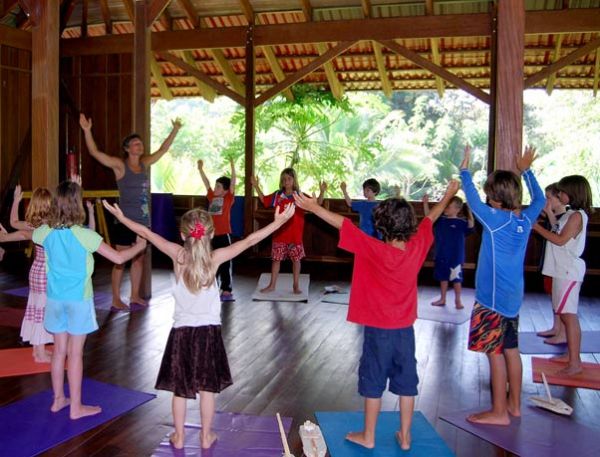Children Yoga Teachers Training (RCYS)
Childhood is the foundation stone upon which stands the whole life structure. The seed sown in childhood blossoms into the tree of life.
Why yoga for children?
The mental states, the nervous system and the chakra system of children are nearly the same of the adults one, even though not completely developed: the first six years of children life are characterised from an iper incessant activity both physical and psychic, and it is not just a ludic phase, but it is what form the base and the foundations of the childhood learning; children learn through the use and the discovery of the senses, and they form the base of their intellectual growth.
Every sensations, emotions, thoughts or any activities that they experience helps them to form the substrate which will be the base of the future balance of their glandular system and the harmony of their chakra.
The yoga exercises involve most of the motor and sensorial organs (sight, touch, hearing, etc.), and children learn to listen themselves from the inner side and to pay attention when arise some sensation from the body, watching their developing and by becoming aware from transformation that can bring.
Who decides to teach yoga and meditation to a child has the great mission to contribute to the improvement of the future human society, because that child may become a happy adult. The training path teaches how to unite the awareness developed with yoga to playfulness and creativity. It is intended for parents, teachers, educators, psychologists, yoga teachers, social workers. It gives tools to work in kindergarten, primary and middle school, entertainment centers, yoga centers, interfacing professionally different categories of participants: children, parents, teachers, attendants, school directors. The course, using a lot of interaction among participants, will address theory, practice, non-verbal communication, levels of mind. Students will learn how to combine drawing, sound, rhythm, playing, storytelling, yoga postures, meditation, dance, chanting mantras, anatomy and biopsychology of yoga and even the yogic ethics (Yama-Niyama).
This course is highly dynamic. Attendees learn effective communication, while playing and pacing their class, accepting all diversities, using creativity. Main characteristic of this training is the so called TAI CHILD, that is made by animals dynamic forms, experienced in schools with success.
Main topics:
- Yoga socio-cultural expression through neo-humanist education
- The child mind levels, different practices for different levels (playing, storytelling, breathing, singing, focussing, relaxing, meditating) and Ashtanga Yoga practice
- Yoga as life style, positive discipline, message to spread among children through playful tools. Daily practices such as yogic hygiene, asana’s for children, breathing awareness, water use, diet rules, rules for a calm sleep, right emotions expression (vritti), mental purity
- Specific programs for different ages (childhood, primary school, etc.), and for physically and mentally challenged children
Prerequisites:
Yoga knowledge, as teachers or as practitioners. Interest for children psychology.
Course Objectives:
- Grown-up teachers can come back to their childhood, avoiding imposing themselves as authoritarian figures. They rather can be friendly teachers, able to make their little students feel at ease in a very intelligent way
- Attendees will get an effective and officially recognized tool, so they will have the opportunity to offer Yoga and Meditation to children, in schools and in every extra-school situation, where practice can be helpful for physical, psychological, emotional and intuitive development, from childhood to preadolescence
Your students will learn how to:
- Manage stress, present, today, unfortunately, since childhood
- Improve self-confidence and relationships
- Develop emotional intelligence and self-awareness, conscious breathing and body awareness
As teachers, you will learn how to:
- Effectively manage a class
- Create a nice atmosphere with your students
- Use innovative methods to manage your student’s energy levels
- Help students to keep a good posture and to take care of their bodies
- Teach with creativity











